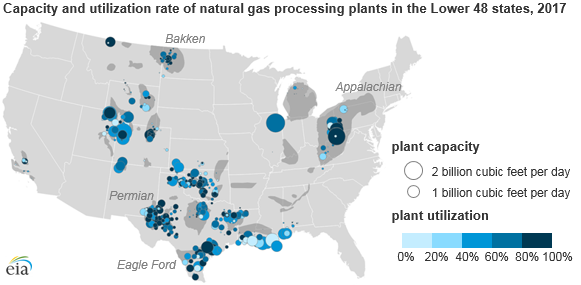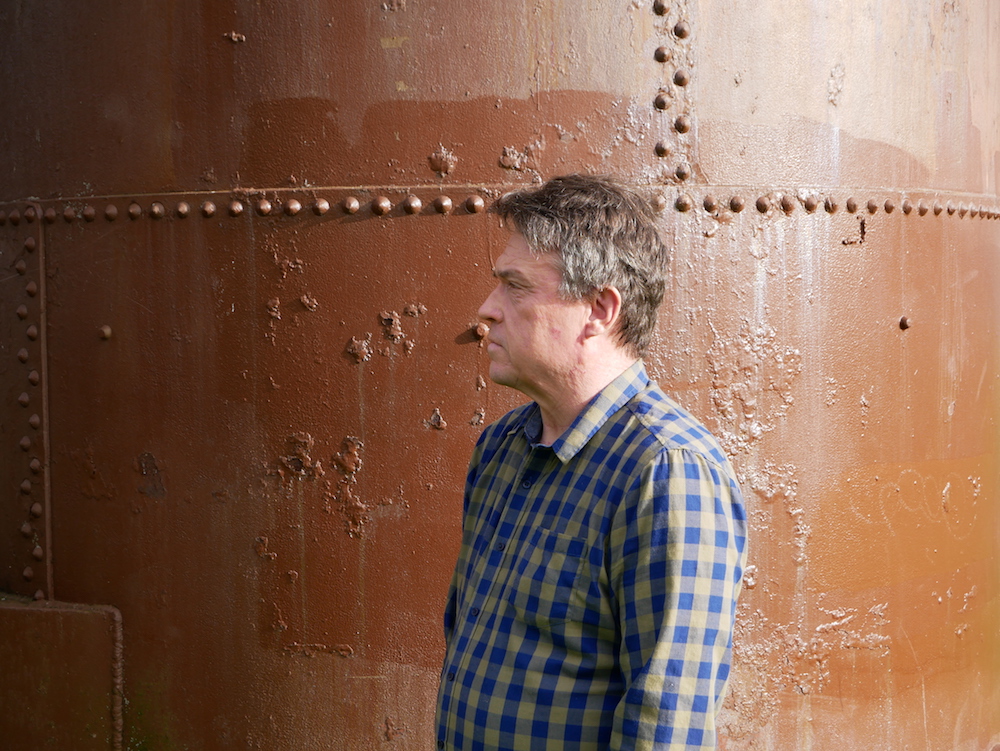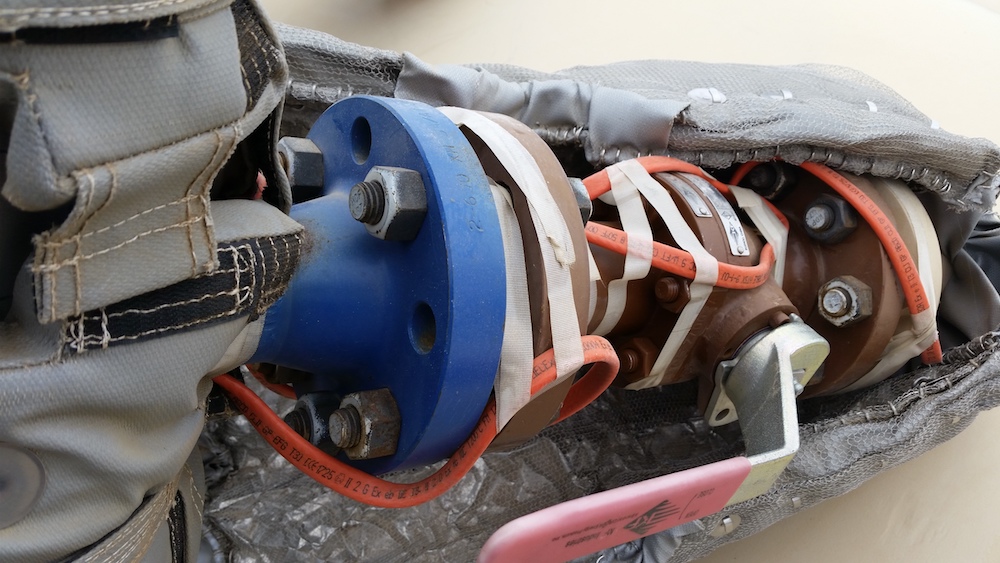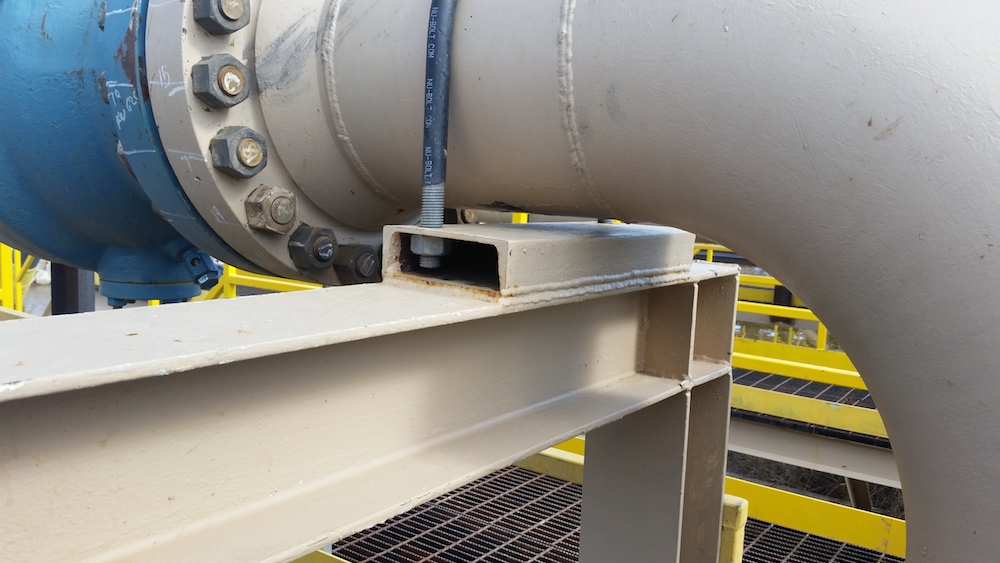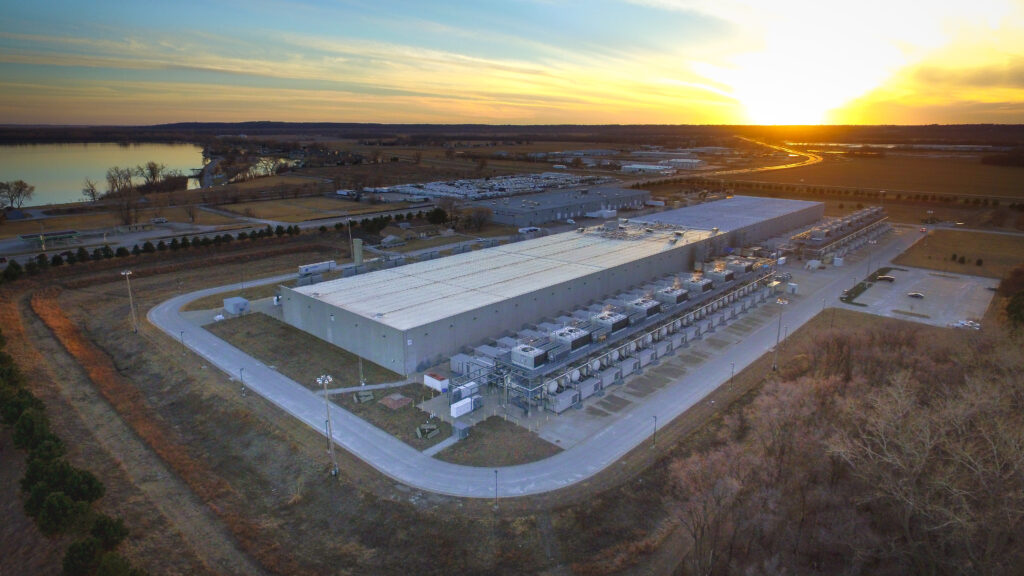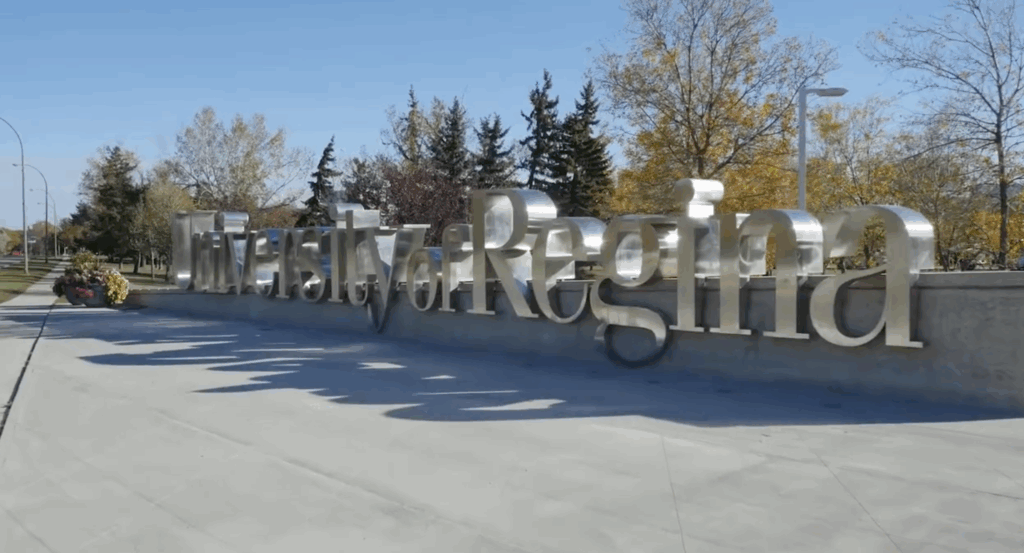Two North Dakota gas processing plants in the heart of the Bakken oil fields have shown signs of an eroded safety culture and startling construction problems, according to Paul Lehto, a 54-year-old former gas plant operator who has come out as a whistleblower. He described worrisome conditions at the Lonesome Creek plant, in Alexander, and the Garden Creek plant, in Watford City, where DeSmog recently revealed one of the largest oil and gas industry spills in U.S. history had occurred. Both plants process natural gas brought via pipeline from Bakken wells and are run by the Oklahoma-based oil and gas service company, ONEOK Partners.
“The safety culture is embarrassing,” said Lehto, who has described to DeSmog the discovery of dozens of loose bolts along critical sections of piping, and other improperly set equipment, deficiencies he attributes to the frenzied rush of the oil boom that has dominated the state’s landscape and economy. “North Dakota is basically a Petrostate,” said Lehto, who worked at the two plants between 2015 and 2016. “There is regulatory capture, and sure that happens in other areas, but nowhere is it more extreme than in North Dakota.”
“The reason I am coming forward is that while I didn’t think ONEOK was doing their job, I still trusted the state to regulate and do its job,” said Lehto. “But in reading what the state’s response was to the condensate spill, I have lost all confidence that the state is acting as a legitimate regulator.”
Furthermore, a trove of documents received by DeSmog from the North Dakota Department of Environmental Quality (DEQ) under a public records request has revealed that despite state regulators listing the Garden Creek spill as just 10 gallons from 2015 to 2019, an intense multi-year cleanup operation was underway to remove the spilled natural gas condensate from the grounds of the plant. According to a cleanup document, the ground well beneath the plant became saturated with condensate, so much so that even 18 feet down, a “pure gasoline-like odor” was detected.
Also, groundwater at one monitoring well registered the carcinogen benzene at levels nearly 2,000 times that required by the state health department.
DeSmog has also received new information to indicate that the Garden Creek spill, whose size continues to be downplayed in statements to the media by DEQ officials, was indeed officially estimated at 11 million gallons. This puts the release, in terms of gallons spilled, on par with the infamous 1989 Exxon Valdez oil spill in Alaska and secures Garden Creek a spot as one of the largest industry spills in U.S. history. ONEOK has not received any fines from North Dakota regulators for the spill.
“Eleven million gallons just barely underground but steadily evaporating, and lots of benzene which is really nasty stuff,” said Lehto, who says ONEOK never officially informed him about the spill. “It’s like working on a health time bomb, we are the guinea pigs for the largest condensate spill in U.S. history. I am glad I got out but feel sorry for workers still there.”
ONEOK spokesperson Brad Borror rejected the idea that workers are at risk. “We have performed assessments and sampling for our employees and contractors, including soil vapor analysis and indoor and outdoor air monitoring at the facility,” he said.
Ripples in the Wake of DeSmog’s Spill Reporting
The spill, initially reported by DeSmog on August 19, has since been reported in papers across the nation and in every major North Dakota city, and the incident has jostled the state’s typically pro-industry politics. “Oil patch spills and leaks need thorough investigations and timely inspections,” stated an editorial in the Bismarck Tribune in September. “Our present course is to moral bankruptcy.”
A spokesperson for Republican Governor Doug Burgum told DeSmog, “The Governor supports ongoing efforts…to provide unified spill reporting with an increased frequency of report updates in an easily accessible format online.” The spokesperson said the governor also supported “current efforts by the DEQ to review all open spill cases to ensure they are updated with the latest available information.”
U.S. natural gas processing plant capacity and throughput have increased in recent years. Credit: U.S. Energy Information Administration
But for many North Dakotans, rattled by the runaway industry, these efforts are not nearly enough. “The citizens of North Dakota have a right to accurate information on spills,” Sarah Vogel, a former North Dakota Agriculture Commissioner and assistant attorney general, told DeSmog. “We need to know why workers at the Garden Creek plant reported that only 10 gallons had spilled, and why did the state publish that number and keep publishing that number?”
“It is against the law in North Dakota to knowingly report false information to the state, and to make false state records,” Vogel added. “Weak and vague promises by the Governor, the Attorney General, the Health Department, or the Mineral Resource Division of the Industrial Commission that they will now seek further ‘transparency’ will no longer suffice. We need state and federal law enforcement authorities to do their jobs.”
When asked if the U.S. Environmental Protection Agency’s (EPA) Criminal Enforcement division is investigating the spill, an EPA spokesperson told DeSmog, “EPA does not comment on ongoing or potential criminal investigations.”
Working at Garden Creek, ‘Just Like Homer Simpson’
Paul Lehto traveled to western North Dakota from Michigan in 2014 looking for work and says within hours of arriving in boomtown Watford City he had found a job working as a shift manager at Cash Wise Foods, a local grocery. In April 2015, ONEOK hired him to train as an operator at the Garden Creek Plant. The gas condensate spill was discovered in July that year.
Lehto says working as an operator at Garden Creek was “just like Homer Simpson running a nuclear power plant…you are sitting in front of a bank of computers being able to optimize the amount of propane, ethane, and butane you are getting out as product.” These fossil fuels are used as feedstocks to produce plastics and petrochemicals, among other things.
Pictured in September 2019, Paul Lehto resigned from ONEOK, citing safety concerns, in July 2016. Credit: Ashley Braun, DeSmog
One of Lehto’s tasks was to inspect the grounds twice a shift, often with an instrument called a “sniffer” that detects volatile organic compounds, which the EPA says are “of concern” as air pollutants, and other hydrocarbon emissions.
“Everywhere I looked I would get readings, sometimes so hot the equipment would actually shut down,” said Lehto, whose Personal Protective Equipment, or PPE, included a fire-resistant uniform, hard hat, steel toe boots, safety glasses, and earplugs but no mask or respirator. “The Garden Creek facility was literally sitting on a lake of spilled condensate.”
Borror with ONEOK put it differently. “The air monitoring assessments have not indicated a need for our plant-based employees and contractors to wear additional PPE, such as respiratory equipment,” he said. “The condensate release occurred in the subsurface soil and remains in the subsurface until it’s recovered using a robust combination of systems.”
How Big Was the Spill, Really?
Just how big that lake of spilled condensate was has been an issue of contention. In August, ONEOK told the Associated Press the numbers quoted in a document DeSmog received from a different whistleblower were “hypothetical assumptions” and pointed out the report was done by a consultant. This statement was repeated in papers across the country, acting to question the validity of the 11-million-gallon spill figure.
But Lehto pointed out to DeSmog that “11,000,000 is a ONEOK number, not a contractor pulling figures out of thin air.” He cited the document DeSmog initially revealed, which reads, “an ORM estimate of approximately 11 million gallons released.”
“ORM is not a term of art but rather a direct reference to the legal name ONEOK operates under in the Bakken,” Lehto told DeSmog. The acronym, in fact, stands for ONEOK Rockies Midstream. “ORM is one of the ways we referred to ONEOK, and ONEOK Rockies Midstream was the name on my paychecks,” said Lehto.
ONEOK Rockies Midstream (ORM) operates in the Williston Basin, which includes the Bakken Shale. Credit: ONEOK website
Furthermore, Lehto says that computers at the Garden Creek plant constantly record pressure on incoming and outgoing pipes and should have recorded data that would enable the operators, or investigators, to figure out exactly how big the spill was.
“The whole idea that they can’t come up with a scientific number is just bullshit, an estimate is usually what you have to deal with in situations like this,” said Lehto. “I mean this is their income, it is in their business interest to know how much was spilled.”
When asked if the discrepancies in spill reporting were grounds for criminal action, Chicago-based energy attorney Paul Neilan told DeSmog, “If you have records at this site that show you are cleaning up hundreds of thousands of gallons and at the same time you are reporting only 10 gallons, that kind of imbalance shows somebody knew something and didn’t want to tell someone else about it.”
ONEOK is headquartered in Tulsa, Oklahoma. Credit: Joseph Wingenfeld, CC BY 2.0
Borror, the ONEOK spokesperson, contested that the spill could be measured or even reasonably estimated. “When a liquid is released underground, there are limits to how precisely anyone can estimate the quantity released,” he said. “The estimating challenge is even greater when the release is more a result of seepage rather than a rupture, occurring at too slow of a rate to be detected. Additionally, we don’t know when the release began.”
On September 4, DeSmog informed the North Dakota DEQ that the publication was writing a follow-up on the Garden Creek spill, but the agency has not responded to a new set of questions.
The publicly available DEQ report for the Garden Creek spill received only one update between September 2015 and July 2019, but has been updated 12 times since DeSmog published its August 19 article on the spill. On September 6, a state inspector visited the site and noted that, “As of August 30, 2019, the amount of condensate recovered is estimated at 862,735 gallons.”
Working at Lonesome Creek, a Plague of Loose Bolts
At the Lonesome Creek plant, Lehto began as an operator in the fall of 2015. On April 27, 2016 he was using a sniffer to check for leaks along a series of tanks called slug catchers that are used to draw water and other liquids out of the gas stream when he noticed a leak. The cause, upon inspection, was a set of loose bolts. When Lehto checked other bolts on piping in this area he realized that all of them were loose, dozens in total.
“Every single bolt that I looked at was loose and some could be moved with fingers, which is astonishing since a light bump could trigger a catastrophic pressurized release,” said Lehto.
After finding a leak at ONEOK‘s Lonesome Creek gas processing plant in 2016, Paul Lehto discovered loose bolts on this slug catcher, which pulls liquids out of the gas stream. During normal operations, these units, adjacent to the condensate tanks, are covered by the gray insulation. Credit: Paul Lehto
Many pipes at gas processing plants in North Dakota are covered with insulation to protect against cold during the harsh winters. Typically, when a plant is being constructed, pipes are put in and bolts are set; then, what is known as a “torque team” comes in to firmly tighten down all bolts before the insulation is installed. Lehto suspects that in the rush to get the plant online and product flowing, the critical stage of tightening the bolts was missed.
When asked if loose bolts could have been the cause of the “hairline crack” that ONEOK says triggered the Garden Creek spill, Lehto replied, “Yes, a hairline crack would be one thing that could happen when bolts are not torqued down properly, so it is a good hypothesis.”
While working at ONEOK‘s Lonesome Creek gas processing plant in Alexander, North Dakota, Paul Lehto found this visible air gap between a pipe and its support beam, leaving room for vibration. Typically, the pipe rests on another material in order to secure it with the U bolt. Credit: Paul Lehto
Lehto conveyed the loose bolt problem to various ONEOK managers, and filed an internal form meant to convey safety problems on this issue, called a “near miss” form. But he says the general response was dismissive, and the beginning of a trend in which safety issues he spotted were ignored. Eventually he quit, notifying employers in a July 23, 2016 email.
“ONEOK makes remarkably strong statements and claims about safety,” wrote Lehto. “All I’ve attempted to do is follow that, but…I have the unmistakable impression these efforts were quite annoying or bothersome to some others, even as everyone of course says safety is a good thing.”
“Every ONEOK employee is expected to report safety concerns to their supervisor so that issues can be appropriately addressed,” ONEOK spokesperson Borror told DeSmog. “We have a robust system for reporting safety concerns as outlined in ONEOK’s Environmental, Safety and Health Commitment, Code of Business Conduct and Ethics and Whistleblower Policy.”
Lehto said ONEOK policies may look good on paper but are not closely followed. In the resignation letter, he stated that ONEOK employees “scolded” him for finding leaks, something he believed as plant operator it was his job to do. “I always assumed ONEOK wanted to know,” he wrote, “so I worked hard to find issues.” He says that in the time period he was at the plant, other than the series of loose bolts associated with the leak he found by the slug catchers, the dozens of other loose bolts he discovered were never tightened.
“I quit,” Lehto explained to DeSmog, “because I couldn’t work at ONEOK and be honest.”
Main image: Paul Lehto, a ONEOK gas plant employee from 2015 to 2016, in 2019. Credit: Ashley Braun, DeSmog
Subscribe to our newsletter
Stay up to date with DeSmog news and alerts




